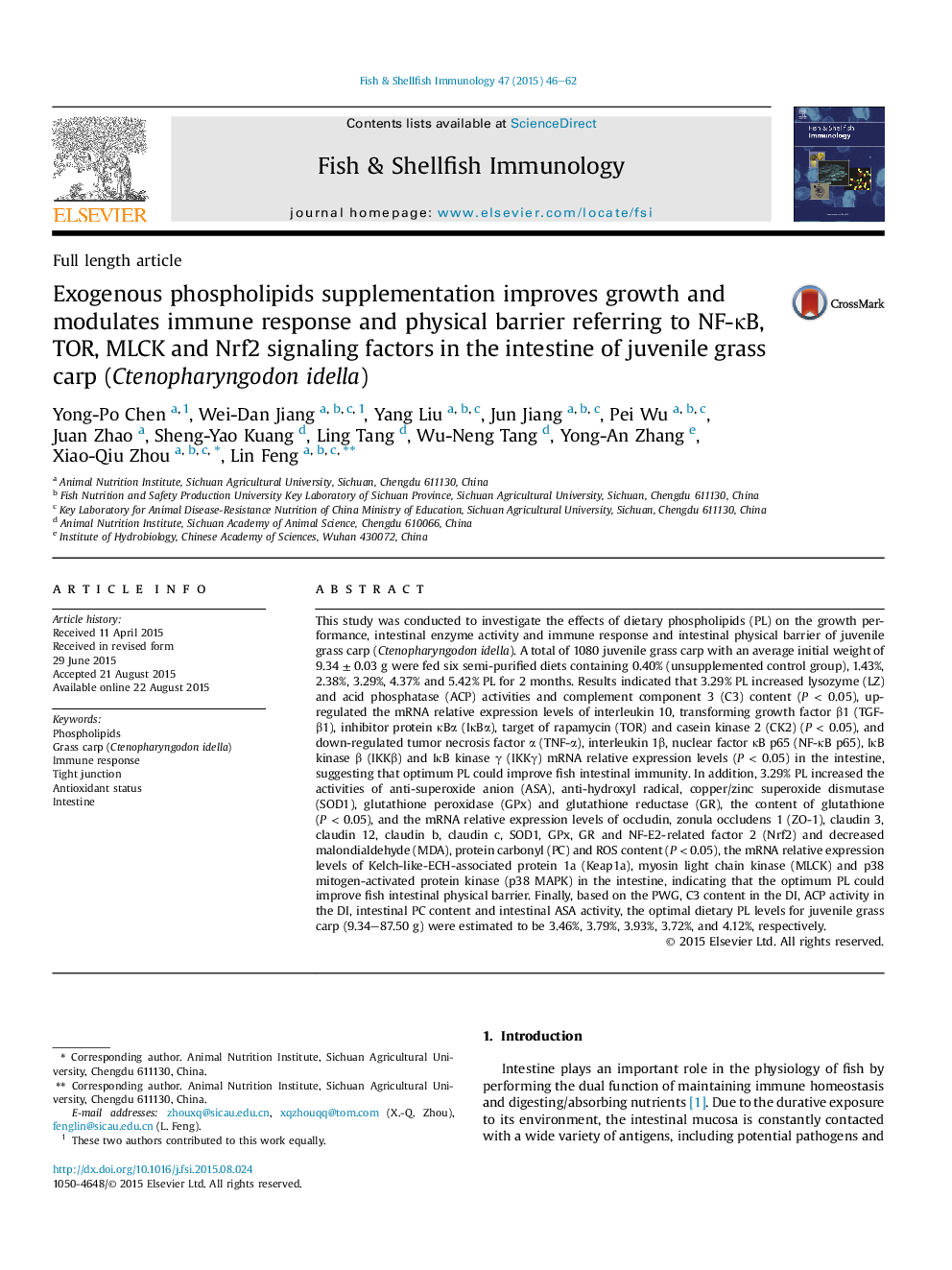| Article ID | Journal | Published Year | Pages | File Type |
|---|---|---|---|---|
| 2431071 | Fish & Shellfish Immunology | 2015 | 17 Pages |
•PL improves intestinal innate immunity.•PL orchestrates intestinal inflammatory response via regulating cytokine expression.•PL up-regulates expression of intestinal tight junction protein genes.•PL elevates intestinal antioxidant capacity.•PL modulates signaling molecules: NF-κB, TOR, MLCK and Nrf2.
This study was conducted to investigate the effects of dietary phospholipids (PL) on the growth performance, intestinal enzyme activity and immune response and intestinal physical barrier of juvenile grass carp (Ctenopharyngodon idella). A total of 1080 juvenile grass carp with an average initial weight of 9.34 ± 0.03 g were fed six semi-purified diets containing 0.40% (unsupplemented control group), 1.43%, 2.38%, 3.29%, 4.37% and 5.42% PL for 2 months. Results indicated that 3.29% PL increased lysozyme (LZ) and acid phosphatase (ACP) activities and complement component 3 (C3) content (P < 0.05), up-regulated the mRNA relative expression levels of interleukin 10, transforming growth factor β1 (TGF-β1), inhibitor protein κBα (IκBα), target of rapamycin (TOR) and casein kinase 2 (CK2) (P < 0.05), and down-regulated tumor necrosis factor α (TNF-α), interleukin 1β, nuclear factor κB p65 (NF-κB p65), IκB kinase β (IKKβ) and IκB kinase γ (IKKγ) mRNA relative expression levels (P < 0.05) in the intestine, suggesting that optimum PL could improve fish intestinal immunity. In addition, 3.29% PL increased the activities of anti-superoxide anion (ASA), anti-hydroxyl radical, copper/zinc superoxide dismutase (SOD1), glutathione peroxidase (GPx) and glutathione reductase (GR), the content of glutathione (P < 0.05), and the mRNA relative expression levels of occludin, zonula occludens 1 (ZO-1), claudin 3, claudin 12, claudin b, claudin c, SOD1, GPx, GR and NF-E2-related factor 2 (Nrf2) and decreased malondialdehyde (MDA), protein carbonyl (PC) and ROS content (P < 0.05), the mRNA relative expression levels of Kelch-like-ECH-associated protein 1a (Keap1a), myosin light chain kinase (MLCK) and p38 mitogen-activated protein kinase (p38 MAPK) in the intestine, indicating that the optimum PL could improve fish intestinal physical barrier. Finally, based on the PWG, C3 content in the DI, ACP activity in the DI, intestinal PC content and intestinal ASA activity, the optimal dietary PL levels for juvenile grass carp (9.34–87.50 g) were estimated to be 3.46%, 3.79%, 3.93%, 3.72%, and 4.12%, respectively.
